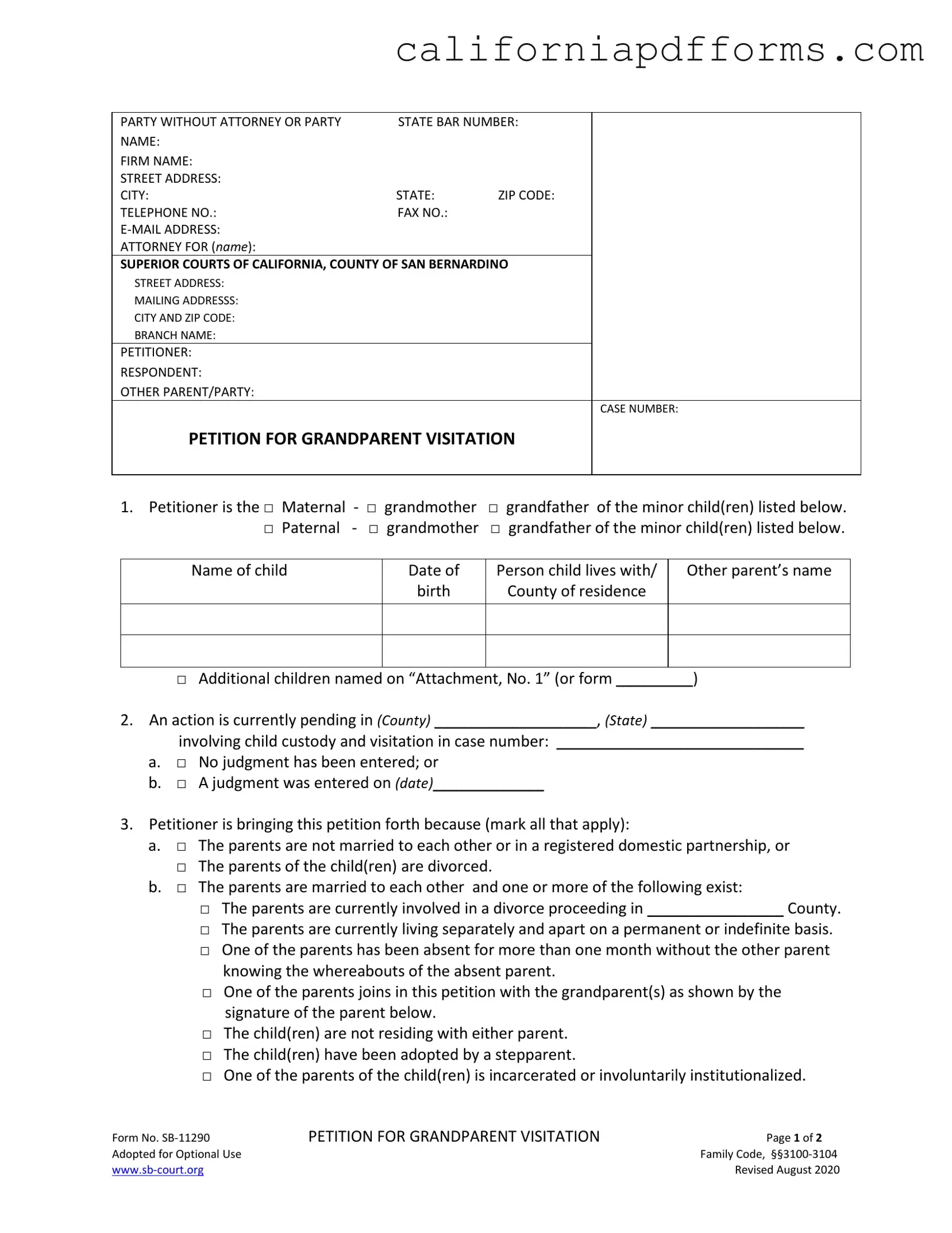Download California Sb 11290 Form
The California SB 11290 form is a legal document used to petition for grandparent visitation rights in California. This form is essential for grandparents seeking to maintain a relationship with their grandchildren when circumstances may prevent regular contact. If you believe that grandparent visitation is in the best interest of the child, consider filling out the form by clicking the button below.
Open Your Form Online
